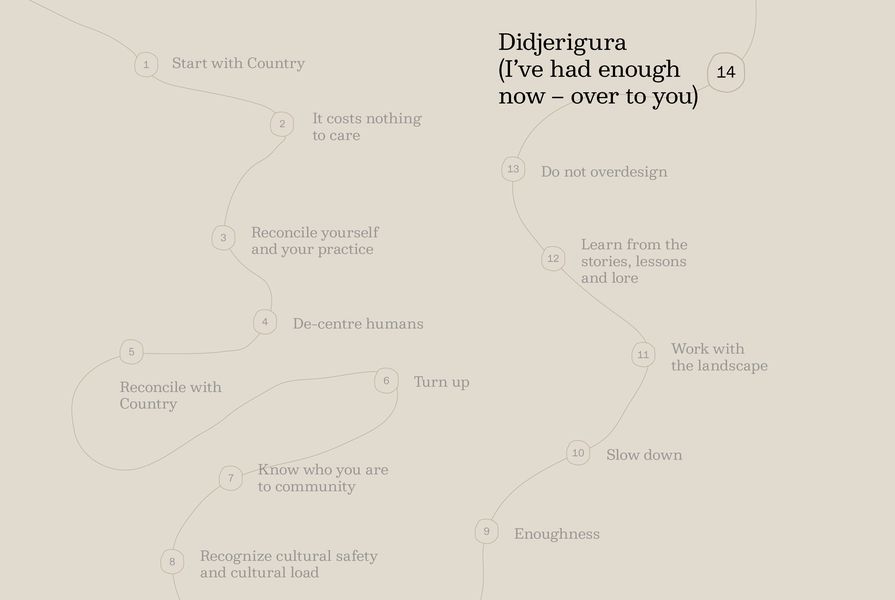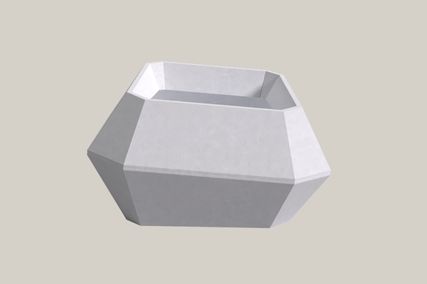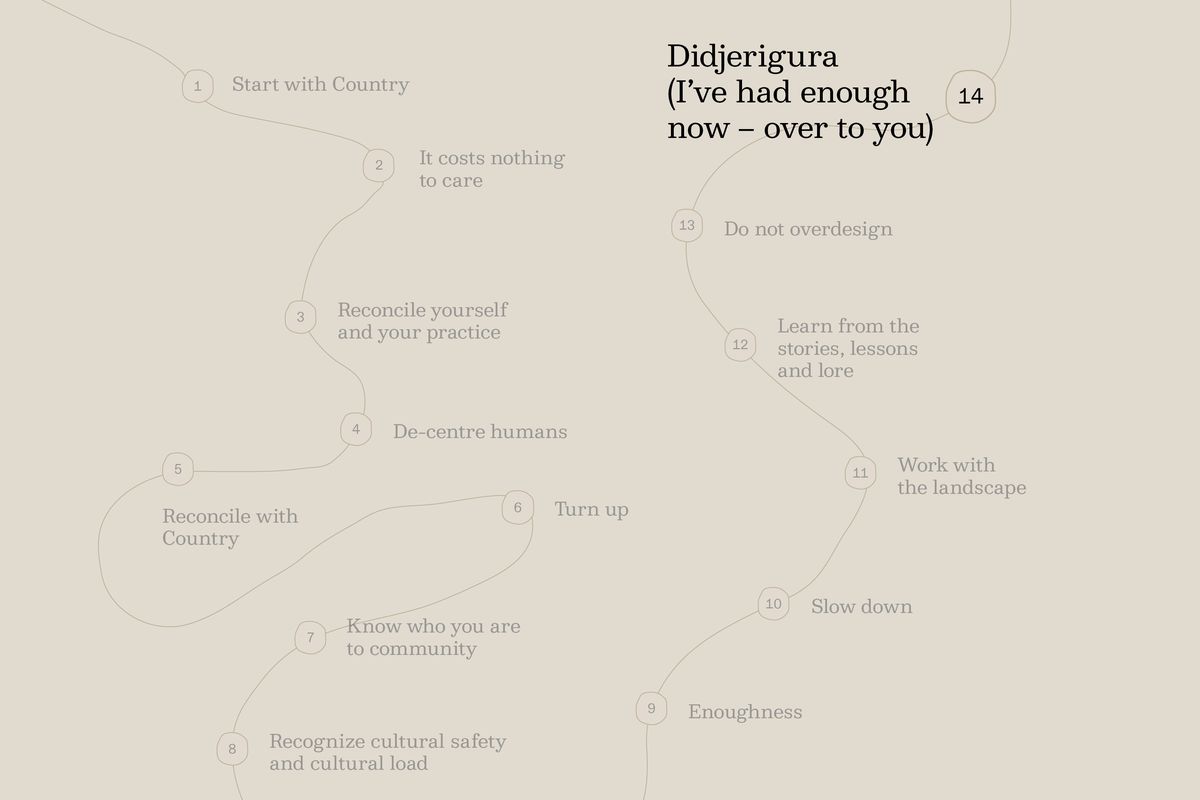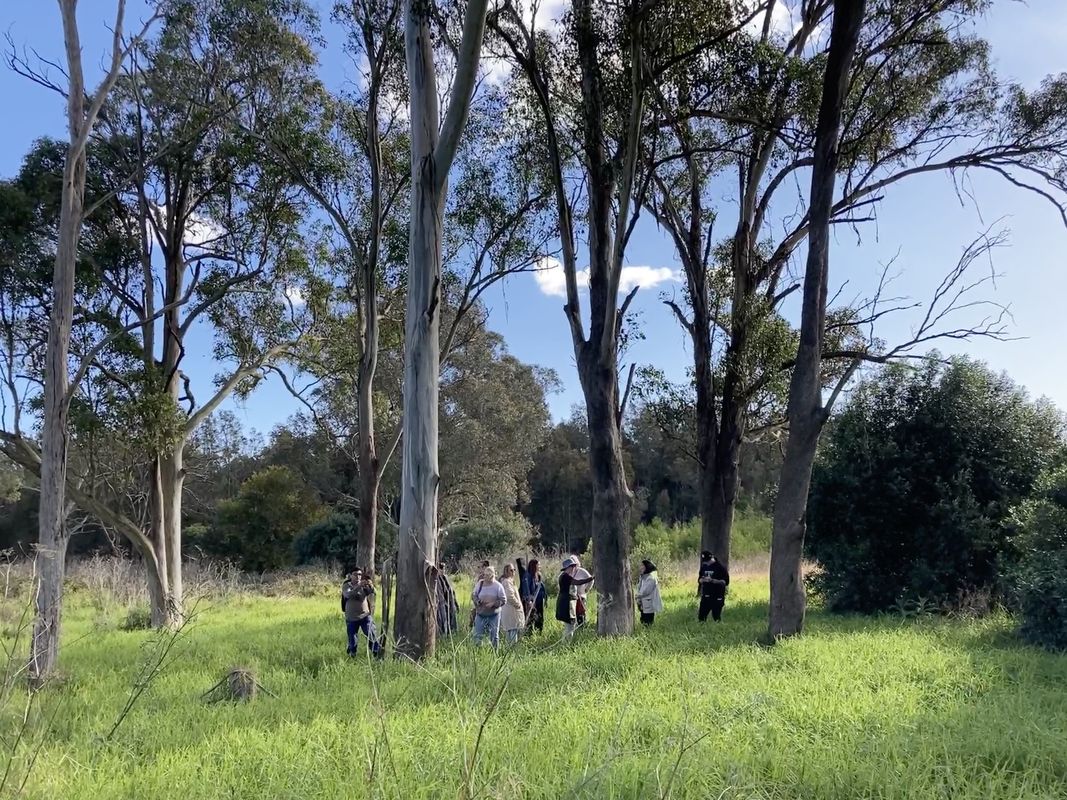To conclude this collaborative piece of First Voices speaking about their aspirations, concerns, guidance, hopes, suggestions, love and dreams for the built environment professions and Country, I have brought together the words of two beloved Elders. It may seem unexpected to place them at the end; however, in Yuin culture, leaders guide from the rear – this is our protocol.1 By taking the last position, the leader is able to see everyone travelling in front of them and ensure that all arrive safely. Metaphorically, in the built environment, we are all travelling towards a different approach to design, planning and architecture. First Nations built-environment professionals can see our industry hastily building its capacity to be and do better by Country, culture and our communities – and so we provide guidance, such as this collective piece. I introduce these Elders’ voices here to ensure you all arrive safely.
They bring with them two principles of inclusion. Aunty Jacinta Tobin shares a principle of inclusion that she calls “Yes and yes,” in which all who come into Country in the right way belong on Country.2 And Uncle Greg Simms generously shares, “We have been waiting a very long time for you to join our circle,” – with “we” in this instance meaning First Nations peoples, and “you” meaning non-Indigenous people.3
But what is the right way to come into Country? How do you join the circle? And how is this related to architecture and design?
Elders, including Aunty Jacinta Tobin, lead a group out on Country where, as if guided by Ancestors, they discovered three scar trees.
Image: Danièle Hromek
It is essential to understand that there were lore and Laws4 here before the British decided to invade. It is important to remember that this Country was taken by force and with aggression, and under international law, the British had no rights to do so. The Laws and lore of the Land are for all; they are about respecting each other’s boundaries in harmony, in line with the shared ceremonial responsibilities to Country and kinship as part of the ceremonial connections to a larger framework. Before ceremony can begin, sit-down business to hear disputes must occur. The process takes as long as it takes; the air must be clear and resolution must be found before true ceremony starts. The emotional body must be cleaned before it can enter the sacred space. This is a strong way of keeping all content between neighbouring tribes and clans.
These days, our society falls short of this old lore to keep harmony. Today, disputes are resolved by others who have no connections to those being judged. Under the old ways, everyone had to be involved with the judgement process, including the victim’s and perpetrator’s families. This was done in a circle manner, with Elders sitting down and discussing punishment. Payback was, and in some places is, the way the punishment is received. Payback could go for four generations, so it is very serious – imagine that your actions might be harmful for your children, grandchildren and great-grandchildren.
Consider now the way the British came into Country, with violence towards both the peoples and Country. Our families are still reeling from the repeated impacts of this force, which has not yet ceased.
Uncle Greg’s generous invitation to join our circle is not just a literal invitation to sit with us to resolve the ongoing dispute of the invasion, but to consider the way of being and doing from a different perspective. In our families from the east coast around the Sydney region, we are matricentric.5 While this is about the mother figures in families (bearing in mind that in our ways, a mother can also include the aunties and those who care for others – we can have many mothers), it is also about our behaviour towards the planet, Mother Earth, from whom we have all come. Mother’s Law is the first lore. Uncle Greg teaches that women are the stone, men are the wood; the women tell what needs to be done, the men make it happen.
In reflecting on matricentricity and Mother’s Law compared with the violence that came with invasion, we return to a very simple principle of do no harm. Do no harm to each other. Do no harm to Country. Do no harm to non-humans or more-than-humans.6 Do no harm to the smallest entities on Country – the microorganisms, ants, bees and bugs. Also do no harm to the largest – the mountains, rivers, oceans and valleys.
Everyone has a role on Country. It takes many points of view to make the complex system we live within healthy and well. “Yes and yes” means all points of view are welcome on Country, as long as they enter Country in the right way and with the right intentions. Yes, your perspective is welcome, and yes, so is mine – and they can coexist. To move forward together, it is critical to take time to consider the harms already caused – by you, by your parents, grandparents and great-grandparents. Have you, in your capacity as an architect or designer, made harmful decisions towards Country? Have you created problems for access to Country – not only for people but for non-humans? Have you unnecessarily flattened the ground, placed structures poorly to obstruct sightlines, removed trees or plants that belong in place? Have you addressed your own cultural capacity with humility? Have you yourself told the truth of your family’s story? Have you addressed your disconnection to your own place of origin?
This is part of truth-telling; it is not only First Nations’ truths that need to be shared. This is the first step to being able to join our circle. Address who you are to Country and culture, and our communities will see you and welcome you. There is a place waiting for you in our circle.
1. With thanks to late Yuin Elder Uncle Max Harrison, who generously taught me this value and protocol.
2. With thanks to Aunty Jacinta for generously sharing her thoughts and words, which she is currently developing into a doctorate.
3. With thanks to Uncle Greg for graciously sharing his wisdom – from which these ideas have been formed – over many years.
4. “Laws” (capital “L”) refers to the laws, customs and protocols of the land set out in the Dreaming as a set of rules or guidelines for every entity to follow as a means of caring for Country. Laws are not changeable by humans. “Lore” refers to knowledge or tradition passed from generation to generation through story, song and other performative expressions.
5. Matricentric means gravitating towards or centred upon the mother.
6. The term “more-than-human” references the interconnectivity between humankind, culture, animals, plants, geology, elements and other non-human/non-breathing entities. More-than-human recognizes the ecosystems within which all of these entities are intertwined, making them more than simply individuals; rather, they are completely reliant on one another. More-than-human includes humans as part of nature rather than separate to or holding authority over nature. More-than-human is used in this context to recognize that entities that are not human hold equivalent agency in places and spaces as humans, and therefore must be considered in a design.
“Didjerigura (I’ve had enough now – over to you)” is one 14 principles of the “What can non-Indigenous architects do” dossier. See all the principles in this dossier.


















